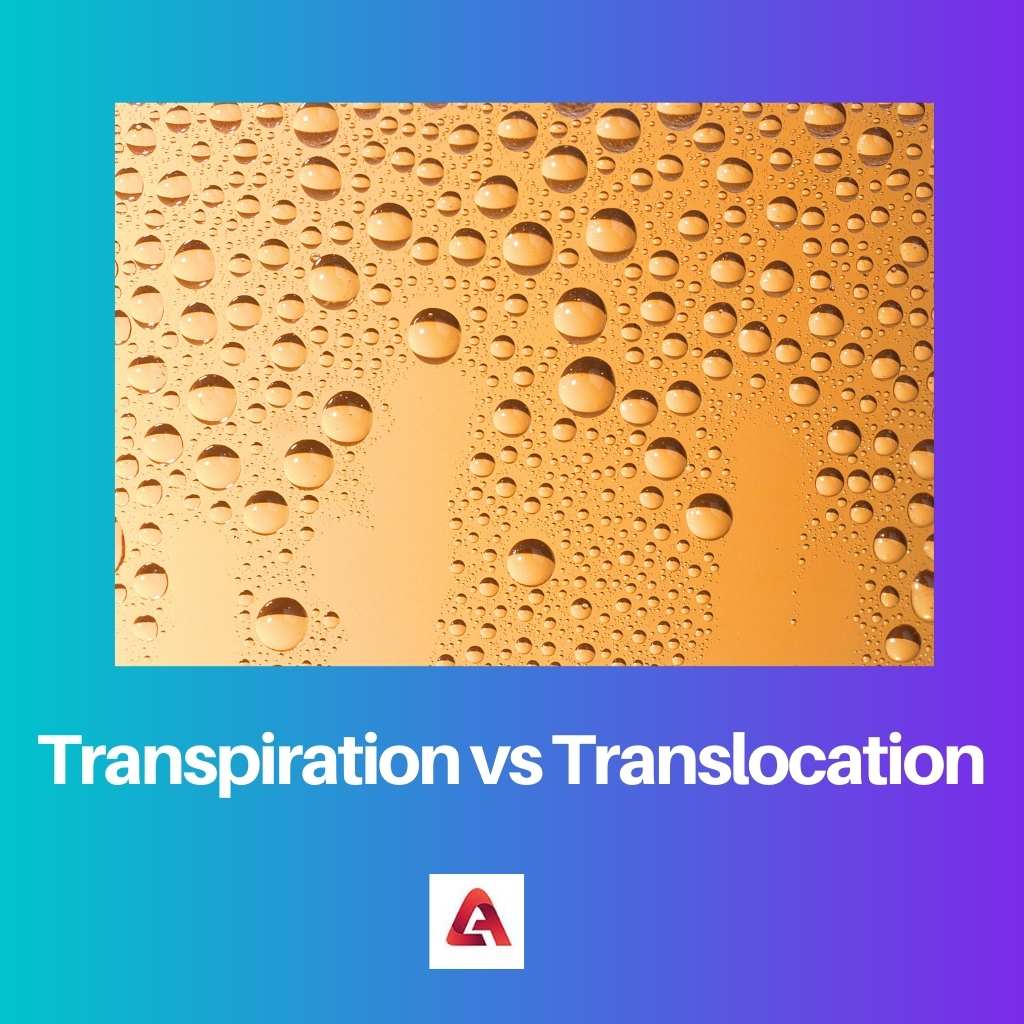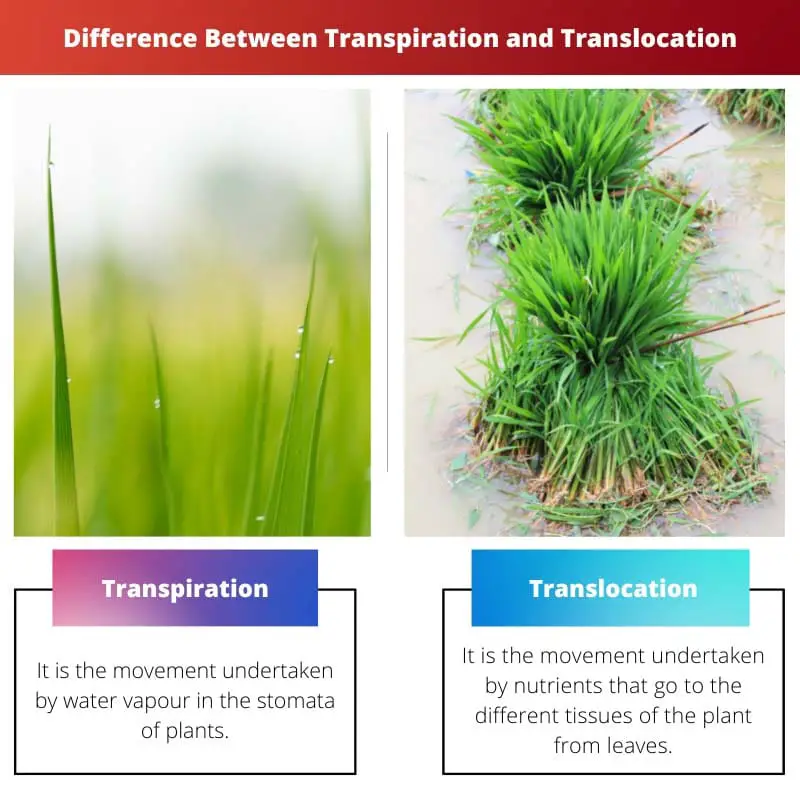The two processes, transpiration and translocation, occur in the body of plants. Both processes include substances that move around the plant’s body and keep it healthy and alive.
Both are important for plants. They have few similarities as they are connected with the same element. However, the differences are more prominent.
Key Takeaways
- Transpiration is the process by which plants release water vapor into the atmosphere through their leaves, while translocation is the movement of nutrients and sugars within the plant.
- Transpiration helps regulate plant temperature, maintain turgor pressure, and facilitate nutrient uptake, whereas translocation ensures the distribution of essential resources for plant growth and development.
- Both processes are crucial for the overall health and survival of plants.
Transpiration vs Translocation
Transpiration involves the loss of water and minerals from the plant, while translocation involves the transport of nutrients from the leaves to other parts. Environmental factors drive transpiration. Translocation is controlled by the plant’s hormones and physiological processes.

Transpiration is a process seen in plants and trees. It can not happen without the sun. So the only appropriate time for it is the day.
This process happens only against gravity as it goes from roots to leaves. This process takes place before translocation.
Translocation is a process that follows transpiration. It happens during the night mostly, and here, the sucrose flows throughout the plant and gives it nourishment.
This process can not take place if transpiration is absent. After transpiration, photosynthesis happens and then ultimately, the process of nourishment gets complete with the completion of translocation.
Comparison Table
| Parameters of Comparison | Transpiration | Translocation |
|---|---|---|
| Definition | It is the movement undertaken by water vapour in the stomata of plants. | It is the movement undertaken by nutrients that go to the different tissues of the plant from leaves. |
| Subject to transportation | Here water vapour gets transported. | Here sucrose gets transported. |
| Direction | Here water vapour travels against gravity. | Here transportation can happen in any direction. |
| Time of occurrence | This happens during the day. | This happens at night. |
| Action carried out by | Here water in the xylem takes charge. | Here phloem does the work. |
| Source | The Source of the water needed here is soil. | The Source of this process is leaves. |
| Ideal atmosphere | On windy and dry, days the rate of transpiration is high. | On warm sunny days, plants end up producing more sucrose. |
What is Transpiration?
Transpiration is a process that refers to the water movement in the body of a plant. Here water vapour travels against gravity through the stoma of the plant.
Without this process, photosynthesis can not occur at all. Photosynthesis is a must for the growth of plants.
In this process, the roots of the plants absorb water and then transport it to the leaves by xylem. Once it reaches the leaves, photosynthesis takes place in the presence of the sun.
The sun is the main ingredient here. Therefore this process only takes place in the daytime.
All the water that reaches the leaves during this occurrence does not get used. If there is any excess water, it evaporates through the leaves.
Not only sun and water from the soil, but the temperature, humidity, number and size of the leaves play an important part too.

What is Translocation?
Translocation is a process that takes place once transpiration is done. In this process, the nutrients move from the leaves to the rest of the body of the plant. It is an organic substance that gets ready after photosynthesis.
By photosynthesis, glucose gets produced, and then this glucose turns to sucrose in the leaves. It gets stored temporarily. This mostly happens at night.
One sucrose is prepared, and it reaches the phloem. After this, the phloem is responsible for transporting the sucrose throughout the plant’s body.
Phloems that take part in this transportation are called assimilates. Assimilates are loaded with the sieve elements. This transportation does not have one fixed route.
It can go in any direction as per the shape of the tree. The pressure difference of the source works as a force. This force creates a route for the assimilates to travel.
Main Differences Between Transpiration and Translocation
- Transpiration takes place in the daytime, but Translocation, on the contrary, is a process that takes place at night.
- In transpiration, water vapour is subject to travel, but in translocation, sucrose is supposed to get transported.
- The fuel of transpiration is derived from the soil, but the fuel for translocation is given by the leaves of the plants.
- Transpiration is a movement that is done by water vapour, and the route of this transportation is the stomata of plants. Translocation, on the other hand, is undertaken by sucrose, the nutrient. The route goes through the tissues of the plant from the leaves of the plants.
- The route of travel in transpiration is always against gravity. But the route of translocation can go in any direction.
- In transpiration, the water of the xylem does the work. But the phloem takes charge in the process of translocation.





